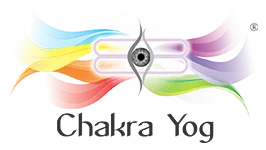Yoga Asanas for Ajna Chakra
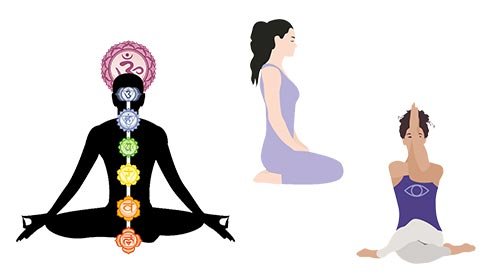
The life force energy (known as “prana”) passes through the subtle body through a number of channels known as “nadis” in yoga. These nadis meet at areas of amplified energy known as “chakras.” Chakras are swirling vortexes of energy in the subtle body that correlate to specific glands along the spine and within the head. They are named after the Sanskrit word for “wheel.” When the nadis get blocked due to bad behaviors and old patterns, the chakras become stagnant. The life force becomes sluggish as a result, which may lead to reduced physical, mental, and emotional health. Yoga practice cleanses and revitalizes the nadis and chakras, allowing prana to flow freely again.
Yoga is an incredibly useful method for releasing prana, or life energy, when it becomes wedged. Through yoga poses (asanas) and breathing, yoga dissolves musty energy and allows new energy into our chakra system. As a means of rebalancing our chakras so that they work optimally we may practice yoga as it definitely helps to either activate a blocked chakra or discharge excess energy from a dysfunctional chakra, for example when a chakra becomes overactive.
An effective way to bring to balance the Third Eye (Ajna) Chakra is to resort to yoga asanas practice on a regular basis, which stabilizes and balances your physical body’s energies from the Third Eye vortex. You will have more clarity of thinking if you balance the Third Eye chakra. You trust your intuition and can clearly see events in your life and the lessons they teach you. You will then be able to perceive the subtle energy that creates and connects everything in the universe. You will be able to perceive things as they truly are without the ego’s projection or appearances as you work to open the Ajna chakra. From there, you may be able to move more effectively toward the things in life that you value. Yoga exercises involving the part of the body of this chakra are aimed to dissolve any blockage at this energetic level.
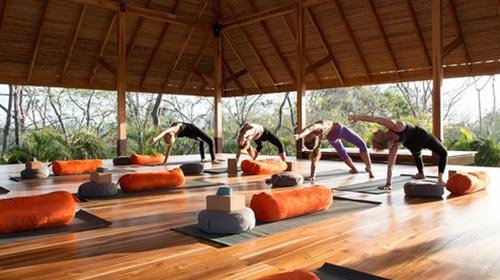
Yoga can be practiced at home, in natural environments or in a yoga studio. At the same time, each chakra is connected with different universal elements being Air, Earth, Water, Ether or Fire. While yoga asanas may be practiced with beneficial results in many distinct surroundings, it is recommended whenever is possible to do these in particular places related to the chakra’s element to enhance the whole experience and results. In the case of Ajna dim light environments into the open like a starry night with clear skies in the countryside is the perfect setting for yoga asanas and introspection into this energy center. Stargazing is a contemplative practice that brings this chakra to balance. When this is not doable to perform, we can equally get beneficial results by practicing it at our home, yoga studio or other specifically dedicated space for this practice too.
Creating a home yoga studio has several advantages and may take your yoga practice to a whole new and enhanced level. It helps you to immerse yourself in yoga so that it becomes a more important part of your everyday rather than something that is exclusively performed at a studio. Indeed, yoga experts and teachers acclaim contrary to popular belief to practice yoga at your own pace in your own place rather than in busy and distracting public yoga centers which tend to rush the practice in too active modes and with limited time and procedures. They reiterate that the practice of yoga should be paced at each person’s rhythm thus allowing a much better integration of the practice as it involves aspects like focus, absorption, breathing or meditation. Therefore, getting involved in public spaces with yoga experienced teachers is principally suggested mostly to get started with the right postures under their supervision at first, but more personal places and environments are more suitable for yoga practice for the healing and balancing of our energy centers (chakras) in the long-term.
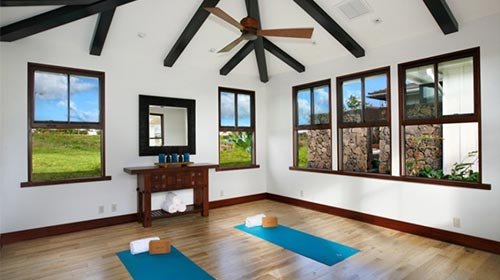
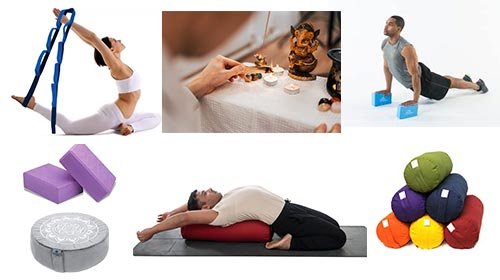
Even in the tiniest of areas, you can carve out a nook and corner for your home yoga studio. The first item you’ll need is a yoga mat, or if you can’t find one, a towel will do. It will protect you from slipping and sliding while you practice yoga.
Below are some other items you may need in your daily yoga practice:
- Yoga Bolsters are used to aid in relaxing, softening postures, and opening up the body. As an alternative, you may make an improvised bolster out of a pillow covered in a blanket. It forms an oval and may be used as a bolster to rest against.
- Yoga Blocks are used to aid in the practice of yoga by bringing the floor closer to you if you are unable to reach it in certain poses. If you don’t have access to yoga blocks, you may use thick books.
- Yoga Straps are used to assist yoga practitioners in achieving a greater range of motion and increased flexibility. Likewise, resistance bands may also be used as an alternative.
- Yoga blankets are great to have on hand since they can help you sit comfortably and relax in restorative positions. As an alternative to yoga-specific blankets, you may use blankets from your bed, throw blankets from your sofa, or towels.
- Yoga cushions and chairs aids in meditation and they are utilized to keep the body in a comfortable sitting posture. They tilt the pelvis, allowing you to sit erect and securely in meditation position. If they are not accessible, you may sit on any cushion from your home, such as one from your sofa or bed, while meditation.
- Altars and the things that decorate them are utilized to integrate the energy of your yoga practice into your surroundings. Deities’ sculptures and sacred symbols and pictures are often placed.
In order to tune up Ajna start with Kapalabhati pranayama. Close your eyes and take a comfortable seat. On each hand, bring your forefinger and thumb together. Inhale through your nose and exhale quickly through your nose, drawing your belly button back toward your spine. The inhalation is passive, while the exhalation is sharp and quick. You can go as fast or as slowly as you like. Set your intention for this practice and after done follow the next yoga sequence.
Activating Ajna brings us out of a long spiritual slumber. It allows us to see the ‘truth’ that surrounds us. This means you’ll begin to notice that our world is inequitable and out of sync with the rest of the universe. Understanding our current lives in terms of cause and effect, in order to live as a “disconnected witness.” Finally, you will feel a stronger connection to the cosmos as well as a connection to everything in nature. It is a profound awareness that allows you to see the beauty in everything and understand that your physical self is not your inner self.
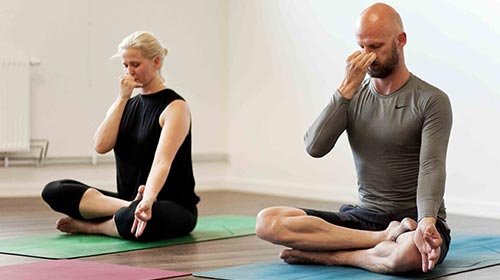
This effective breathing method harmonizes the energy going into the “logical” left brain and the “intuitive” right brain, bringing harmony to the right and left hemispheres of your brain. Take a few deep breaths and find a comfortable place. When you’re ready, lift your right hand and place your index and middle fingers on your third eye chakra on your forehead. Place your thumb on your right nostril. Place your ring and little fingers on your left nostril. Inhale through your left nostril while blocking your right nose with your thumb. Next, close your left nostril and exhale through your right nose by releasing your thumb. Repeat this breathing pattern from left to right and then right to left 10 to 15 times. If you want to envision your breath moving in this rhythm, you may do it with your hands resting in your lap. In this variation, imagine your breath has a color and see it form an inverted “V” that climbs up the length of one nostril to the Third Eye Chakra and descends the length of the other nostril to depart the body. Take three to four neutral and natural breaths through both nostrils to finish the workout.
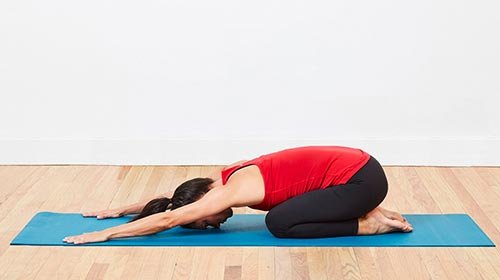
Bring your knees to the floor from Downward-Facing Dog. Place your sitting bones back on your heels and slowly lower your brow to the ground. This will provide a warmth compression to the abdomen. Allow your whole body to soften. Allow the abdominal wall to totally relax, as if it were a buddha belly. Deeply relax. Take 5–8 deep breaths in this stance. (See below picture)
Variations: Place a bolster, pillow, blanket, or towel wrapped below your body and sink into the cushion. In a wide-legged child’s stance, another option is to bring your arms between your legs, hands by your heels. Keep your knees together and your arms out in front of you or by your sides for a more typical child’s position; a block may be placed under your brow if it doesn’t reach the ground. If your sit bones aren’t reaching your heels because of tight hamstrings, lay a wrapped blanket or towel between your calves and the backs of your legs.
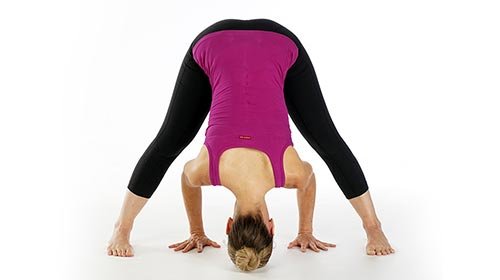
Nothing beats turning upside down to shift your viewpoint. This simple inverted stance lowers your head to your heart and produces a significant change in perspective. Face the long edge of your mat and walk your feet apart as far as you can comfortably. Inhale and either interlace your fingers behind your back or grasp a belt or cloth behind your back. Exhale and tilt forward from your hips with an extended spine. Allow your brow to come into touch with a block, a book stack, or the surface of a chair or couch. There’s no need to strain your legs and back attempting to achieve an unpleasant level. Stay for one to two minutes here. Exit the posture by bending your knees and stretching your spine long to stand tall with an extended back.
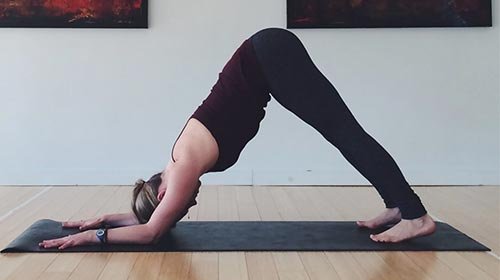
Begin on your hands and knees, with your shoulders piled over your wrists and your hips stacked over your knees. Bring your elbows down and walk them close enough together that you can grip opposing elbows with opposite hands. Allow your elbows to drop and bring your forearms to the mat, fingers pointing to the top of the mat. Put your toes in. Spread your fingers wide and press into your palms and forearms, then raise your hips into downward dog. Continue to press into your forearms to prevent your shoulders from collapsing, but keep them away from your ears. If it seems more comfortable or if you want an added challenge, walk your feet closer to your elbows. As you engage your core, keep your neck in alignment with your spine. To prevent arching your lower back, bring your rib cage together. Hold for 3-5 seconds. Experiment with moving your feet closer or farther back and raising one leg, then the other, to prepare for a forearm stand.
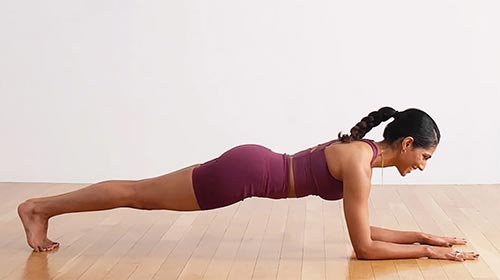
Get down on your hands and knees. Bring your elbows to the floor precisely under your shoulders and your hands to Prayer (Anjali Mudra). Step your feet back while straightening your legs behind you. Only the balls of the feet and the forearms make contact with the floor. Strengthen your knees, engage your tummy, and draw your front ribs in and up to expand your low back. This is a difficult stance; persevere! Imagine an invisible stream connecting the prayer hands and the third eye. That stream represents your intention. Concentrate on it for 5–10 breaths. Allow your determination to cling to something worthy of your attention to make you powerful. Rest on your tummy as you come out of the stance.
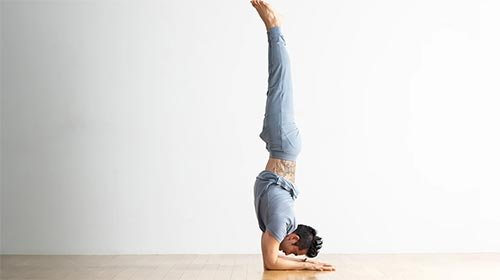
You will now combine all of the aspects of this Forearm Balance exercise. Ajna chakra, like inversions, may have a significant impact on your perception. Bring your elbows beneath your shoulders and your hands into anjali mudra, facing the wall. Bring your legs as near to your arms as possible. Maintain a long and lifting spine! Raise one leg as high as it will go and kick the other leg up as you push off the floor with your feet to contact the wall. Take a breather here. Keep your shoulders away from your ears and your head off the ground. Balance on your forearms until you feel stable. Lift your gaze and bring the center of your third eye to your thumbs. You may keep your feet on the wall or pull them off one at a time so your legs are perpendicular to the ground. You are now balanced with your third eye at your thumbs and your feet precisely over your pelvis. Spend 5 breaths, or as few or as many as you wish, and then drop the legs one at a time in the same manner that you came up.
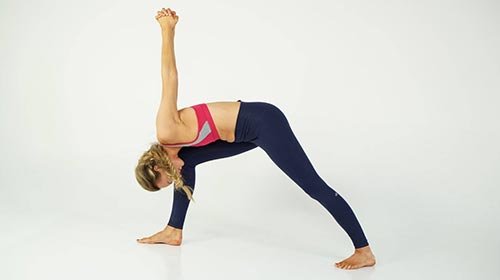
Begin by standing with both feet forward. Then, take a step forward with your right foot and gently bend your right leg to resemble a sofa. Maintain a straight back while looking forward. Avoid locking your knee and do not allow your knee to go past your toes. Inhale as you connect your hands behind your back, palms facing each other. Lean forward and lift your joined hands as far behind your back as you can, bringing your right shoulder to your right knee. Remember to breathe while doing so. Allow your head to fall as far to the ground as your body will allow. Relax your neck, shoulders, and head. This stance should allow the flow of energy in our upper bodies to be unblocked. Stretching and opening your shoulders will free the conduit between your mind and heart, allowing for more concentrated thinking and creativity. Your body should begin to feel free of uncertainties and weaknesses as you expand your shoulders and chest.
Restorative yoga poses are practiced always at the end of the yoga practice to provide rest to the body and self-assimilation of the yoga asanas previously done. They are all about slowing down and incorporating what has been done.
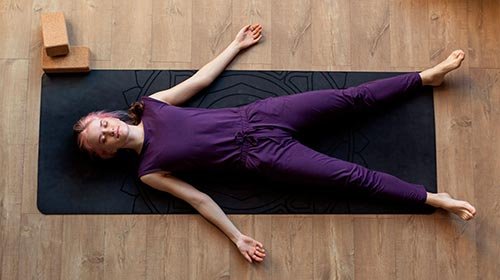
When you’re finished, fall back in Savasana and allow your body to relax as if you’re floating on top of water, drifting into a tranquil and pleasant repose.
Aside from the yoga positions outlined above, cultivating a deeper feeling of steadiness throughout your practice may take various forms. If visualizations have previously benefited you in your practice, consider imagining or wearing the color yellow, which is the color of the Third Eye (Ajna) Chakra. This vision may assist you in rekindle your inner flame revealing a stronger connection while practicing the above yoga asanas. Singing mantras and also using sound vibrations in the background is another excellent approach to connect with your Third Eye (Ajna) Chakra while doing yoga.


